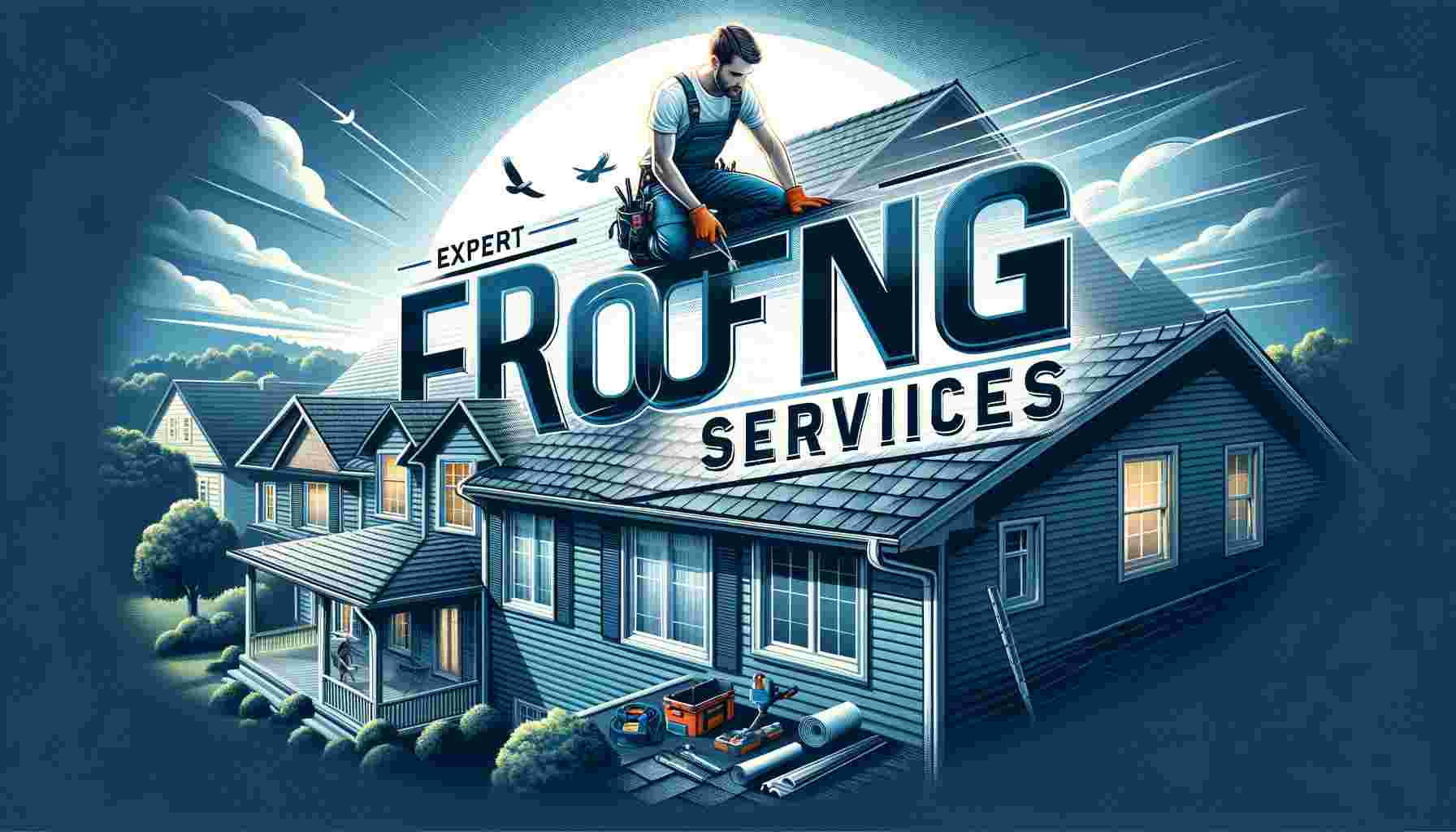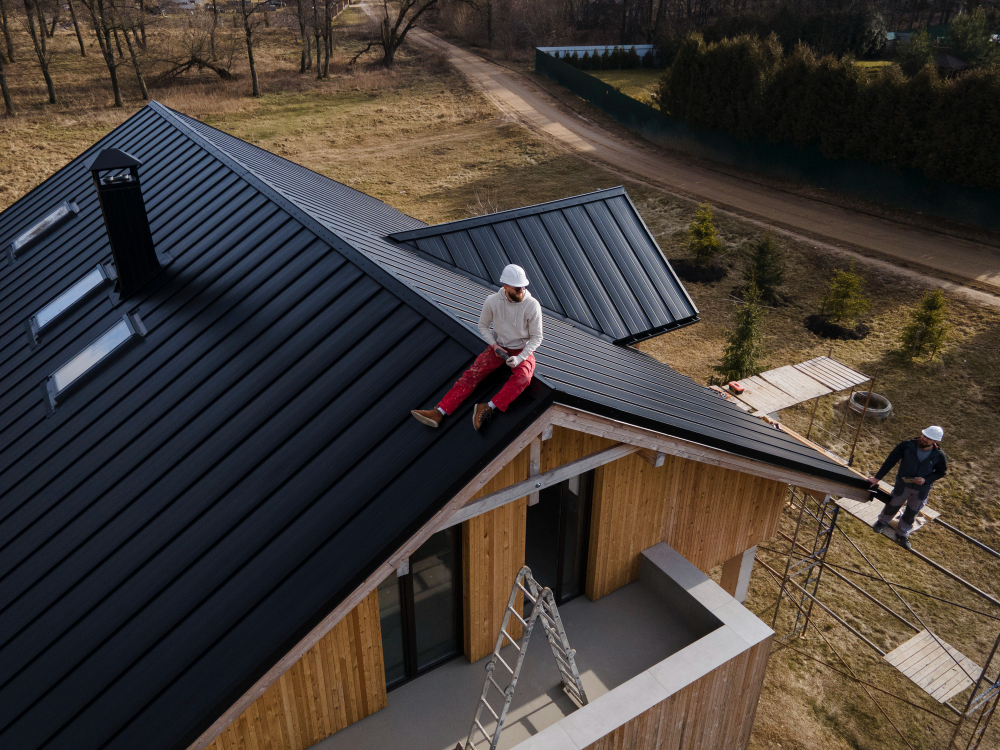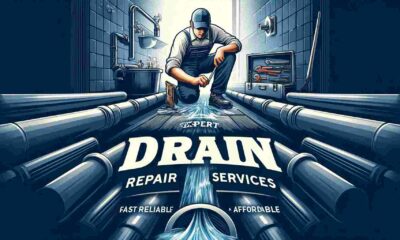Home & garden
Roofing Contractor Ottawa: Finding the Best Services for Your Home

Roofing is an essential aspect of any building, and it requires the expertise of a professional roofing contractor to ensure that it is done correctly. In Ottawa, there are numerous roofing contractors, making it difficult to choose the right one for your roofing needs. However, by doing thorough research and considering various factors, you can find a reliable roofing contractor in Ottawa.
When choosing a roofing contractor Ottawa, it is crucial to consider their experience, qualifications, and reputation. An experienced roofing contractor is likely to have the necessary skills and knowledge to handle any roofing project, while a qualified one can guarantee quality workmanship. Additionally, a reputable roofing contractor has a track record of delivering satisfactory results to their clients. Therefore, it is essential to read reviews and testimonials from previous clients before making a decision.
Choosing the Right Roofing Contractor
When it comes to getting a new roof installed or repairing an existing one, choosing the right roofing contractor is crucial. A professional and experienced roofing contractor can ensure that the job is done right the first time, saving you time and money in the long run. In this section, we will discuss some essential factors to consider when choosing the right roofing contractor for your project.
Licensing and Insurance
One of the most critical factors to consider when choosing a roofing contractor is whether they are licensed and insured. A licensed contractor has passed the necessary tests and met the requirements to perform roofing work in your area. Insurance is equally important because it protects you from any liability in case of accidents or damage to your property during the project. Before hiring a roofing contractor, make sure to ask for their license and insurance information and verify it with the relevant authorities.
Local Expertise
Another factor to consider when choosing a roofing contractor is their local expertise. A local contractor is familiar with the weather conditions, building codes, and other regulations in your area, which can affect the installation or repair of your roof. They also have a better understanding of the local market and can provide you with customized solutions that meet your specific needs. When searching for a roofing contractor, look for someone who has been in business for several years and has a good reputation in your community.
Customer Reviews and Testimonials
Finally, customer reviews and testimonials are an essential factor to consider when choosing a roofing contractor. They provide insight into the quality of work, customer service, and overall experience that you can expect from the contractor. Look for reviews on the contractor’s website, social media, and other online platforms. You can also ask for references from the contractor and contact their previous clients to get a better understanding of their work.
In conclusion, choosing the right roofing contractor is crucial to the success of your roofing project. By considering factors such as licensing and insurance, local expertise, and customer reviews, you can make an informed decision and ensure that your roof is installed or repaired correctly.
Roofing Services Offered in Ottawa
Residential Roofing
A good roofing contractor in Ottawa should be able to offer a range of residential roofing services. This includes the installation of new roofs, roof repairs, and roof replacements. They should also be able to offer advice on the best type of roofing material to use for the specific needs of a homeowner. Some of the most common residential roofing materials include asphalt shingles, metal roofing, and flat roofing.
Commercial Roofing
Commercial roofing is a specialized area of roofing that requires a high level of expertise. A professional roofing contractor in Ottawa should be able to offer commercial roofing services that include the installation of new roofs, roof repairs, and roof replacements. They should also be able to offer advice on the best type of roofing material to use for the specific needs of a business. Some of the most common commercial roofing materials include TPO roofing, EPDM roofing, and PVC roofing.
Emergency Roof Repairs
In case of an emergency, a good roofing contractor in Ottawa should be able to provide immediate assistance. They should be available 24/7 and should be able to respond quickly to any emergency roofing situation. They should also be able to provide temporary repairs to prevent any further damage until a permanent solution can be put in place.
Roof Maintenance and Inspection
Regular roof maintenance and inspection can help to prevent costly repairs and replacements. A professional roofing contractor in Ottawa should be able to provide regular roof maintenance and inspection services. This includes cleaning gutters, checking for leaks, and inspecting for any signs of damage. They should also be able to provide advice on how to maintain a roof to ensure its longevity.
Overall, a good roofing contractor in Ottawa should be able to offer a range of services to meet the needs of both residential and commercial customers. They should be knowledgeable, confident, and clear in their communication with customers, and should always provide honest advice and recommendations
Home & garden
Roof Shingle Repair: Top Roofing and Siding Companies Near Me

Roof shingle repair, roofing and siding companies are essential for maintaining the integrity of a building’s exterior. Whether it’s a residential or commercial property, the roof and siding are the first line of defence against the elements. However, over time, wear and tear, weather damage, and other factors can cause damage that requires repair or replacement.
When searching for roofing and siding companies near me, it’s important to find a reputable and experienced company that can handle the job efficiently and effectively. With so many options available, it can be overwhelming to choose the right one. That’s why it’s crucial to do your research and ask for referrals from friends, family, and neighbours who have had similar work done.
In this article, we will discuss the importance of roof shingle repair and siding maintenance, as well as provide tips on how to find the best roofing and siding companies in your area. We will also cover the different types of shingles and siding materials available, and what to consider when choosing the right one for your property.
Essentials of Roof Shingle Repair
Identifying Shingle Damage
Before starting any repair work, it is important to identify the type and extent of damage to the shingles. Common types of damage include cracks, missing pieces, curling, and blistering. These can be caused by various factors such as weather, poor installation, and age.
To identify the damage, one should inspect the roof from the ground level using binoculars or climb up on a ladder for a closer look. It is important to note that walking on the roof can cause further damage and should be avoided if possible.
Tools and Materials Needed for Repair
Once the damage has been identified, the next step is to gather the necessary tools and materials for the repair. This includes a hammer, roofing nails, roofing cement, a putty knife, replacement shingles, and a ladder.
It is important to use the correct type and colour of shingles to match the existing roof. Additionally, safety gear such as gloves and eye protection should be worn during the repair process.
Step-by-Step Guide to Repairing Shingles
- Remove the damaged shingles: Use a pry bar to remove the damaged shingles, starting from the top and working downwards. Be careful not to damage the surrounding shingles.
- Replace the underlayment: If the underlayment is damaged, it should be replaced before installing new shingles.
- Install the new shingles: Apply a small amount of roofing cement to the back of the replacement shingle and slide it into place. Secure it with roofing nails and cover the nail heads with more roofing cement.
- Seal the edges: Apply roofing cement to the edges of the new shingles to seal them and prevent water from seeping in.
By following these steps, one can successfully repair damaged shingles and extend the life of their roof. It is important to note that if the damage is extensive or the roof is old, it may be necessary to replace the entire roof.
Selecting Roofing and Siding Companies
When it comes to repairing or replacing your roof or siding, it’s important to choose a reliable and reputable company to ensure the job is done right. Here are some key factors to consider when selecting a roofing and siding company.
Criteria for Choosing the Right Company
- Experience: Look for a company with several years of experience in the industry. This ensures that they have the necessary knowledge and skills to handle any roofing or siding project.
- Licenses and Insurance: Ensure that the company you choose is licensed and insured. This protects you from any liability in case of accidents or damages during the project.
- Quality of Materials: Choose a company that uses high-quality materials for their projects. This ensures that your roof or siding will last for years to come.
- Pricing: Compare quotes from different companies to ensure you get a fair price for the project. However, be wary of companies that offer significantly lower prices than others, as this may indicate low-quality work or materials.
How to Find Companies Near You
- Local Directories: Check local directories such as Yellow Pages or Google Maps to find roofing and siding companies near you.
- Referrals: Ask friends, family, or neighbours who have recently had their roof or siding repaired or replaced for recommendations.
- Online Search: Use search engines like Google to find roofing and siding companies near you. Be sure to read reviews and check their credentials before making a decision.
Evaluating Company Credentials and Reviews
- Credentials: Check if the company is a member of any professional associations or has won any awards for their work. This indicates that they are committed to providing quality work and customer service.
- Reviews: Read online reviews from previous customers to get an idea of the company’s reputation. Look for patterns in the reviews, such as recurring complaints about poor workmanship or unprofessional behaviour.
By considering these factors and doing your research, you can choose a reliable and reputable roofing and siding company to handle your project with confidence.
Home & garden
Wall Accents Wood: Adding Warmth and Texture to Your Home Decor

Wall accents made of wood are a popular choice for those looking to add a touch of warmth and character to their home decor. These accents can range from simple wooden frames to intricate carved panels, and can be used in a variety of ways to enhance the look and feel of a room. Whether you are looking to create a cozy cabin vibe or a modern rustic aesthetic, there is a wood wall accent that can help you achieve your desired look.
One of the benefits of using wood wall accents is their versatility. They can be used as a focal point in a room, or as a subtle addition to complement other design elements. Wooden panels can be used to create a statement wall, while smaller accents like shelves and frames can be used to add texture and interest to a space. Additionally, wood is a timeless material that can work with a variety of design styles, from traditional to contemporary.
Another advantage of using Wall Accents Wood is their durability. Wood is a strong and resilient material that can withstand wear and tear over time. With proper care and maintenance, wooden accents can last for years, making them a worthwhile investment for any homeowner. Whether you are looking to add a touch of rustic charm or a modern edge to your home decor, wood wall accents are a versatile and durable choice that can help you achieve your desired look.
Exploring Wall Accents Wood
Types of Wood Accents
When it comes to wall accents made of wood, there are many options available to choose from. Some popular types of wood accents include:
- Reclaimed Wood: This type of wood is sourced from old buildings, barns, and other structures. It is known for its unique character and texture, making it a popular choice for rustic and industrial design styles.
- Barn Wood: Similar to reclaimed wood, barn wood is sourced specifically from old barns. It is often used to create a warm and cozy atmosphere in a room.
- Shiplap: This type of wood accent is created by overlapping wooden boards. It is a popular choice for farmhouse-style design.
- Pallet Wood: Pallets are often used to transport goods, but they can also be repurposed into wood accents. Pallet wood is known for its rough texture and weathered appearance.
Design Styles and Trends
Wood accents can be used to create a variety of design styles, from rustic to modern. Some popular design styles and trends include:
- Rustic: Rustic design is characterized by natural materials, such as wood and stone. Wood accents are often used to create a warm and inviting atmosphere.
- Modern: Modern design is characterized by clean lines and minimalism. Wood accents can be used to add warmth and texture to a modern space.
- Geometric: Geometric design is characterized by bold shapes and patterns. Wood accents can be used to create interesting geometric patterns on a wall.
In summary, wood accents can add warmth, texture, and character to a room. With so many types of wood accents and design styles to choose from, there is sure to be an option that fits any taste or decor.
Installation and Maintenance
DIY Installation Tips
Installing wood wall accents is a great way to add warmth and texture to any room. With the right tools and some basic DIY skills, you can easily install wood accents on your own. Here are some tips to help you get started:
- Measure your walls carefully to determine how much wood you will need.
- Choose the type of wood that best suits your style and budget.
- Use a level to ensure that your wood accents are installed straight and even.
- Use a stud finder to locate the studs in your walls and attach the wood accents securely to them.
- Use a miter saw to cut the wood to the correct length and angle for a professional-looking finish.
Caring for Wood Accents
Wood wall accents can add beauty and value to your home, but they require proper care and maintenance to stay looking their best. Here are some tips to help you care for your wood accents:
- Dust your wood accents regularly with a soft cloth or feather duster to remove dirt and debris.
- Avoid using water or harsh chemicals to clean your wood accents, as this can damage the wood and cause it to warp or crack.
- Use a wood cleaner and conditioner specifically designed for your type of wood to keep it looking its best.
- Avoid exposing your wood accents to direct sunlight or extreme temperatures, as this can cause the wood to fade or crack over time.
- If your wood accents become scratched or damaged, use a touch-up pen or wood filler to repair the damage and restore the beauty of your accents.
By following these simple tips, you can ensure that your wood wall accents look beautiful and last for many years to come.
Home & garden
Mice Control Vancouver: Effective Solutions for a Rodent-Free Home

Mice infestations are common in Vancouver, and they can be a nuisance to homeowners and businesses alike. Mice can cause significant damage to property, contaminate food, and spread diseases. It is important to take steps to control mice populations to prevent these issues from occurring.
One effective way to control mice populations is through professional pest control services. Pest control professionals have the knowledge and experience to identify the source of the infestation and implement effective control measures. They can also provide advice on preventative measures to keep mice from returning in the future.
Another important aspect of mice control is proper sanitation. Mice are attracted to food sources, so it is important to keep food stored in sealed containers and clean up any spills or crumbs promptly. Removing clutter and sealing up any potential entry points can also help prevent mice from entering the building. Overall, taking proactive steps to control mice populations can help ensure a clean and healthy environment for both humans and animals.
Understanding Mice Infestations in Vancouver
Identifying Common Mice Species
There are three common species of mice found in Vancouver: the house mouse, deer mouse, and field mouse. The house mouse is the most common species found in urban areas, while the deer mouse and field mouse are more commonly found in rural areas. The house mouse is typically gray or brown in color and can grow up to 7.5 cm in length. The deer mouse is typically brown with a white underbelly and can grow up to 10 cm in length. The field mouse is typically brown or gray and can grow up to 9 cm in length.
Health Risks Associated with Mice
Mice can pose a number of health risks to humans. They can carry and transmit diseases such as hantavirus, salmonella, and the bubonic plague. Additionally, their droppings and urine can contaminate food and surfaces, leading to the spread of disease. Mice can also cause allergies and asthma attacks in some individuals.
Signs of a Mice Infestation
There are several signs that may indicate a mice infestation in your home or business. These include:
- Droppings: Mice droppings are small and pellet-shaped, and are typically found in areas where mice are active, such as near food sources or in nesting areas.
- Gnaw marks: Mice have strong teeth and will gnaw on a variety of materials, including wood, plastic, and electrical wiring.
- Tracks: Mice leave behind tracks in dusty or dirty areas, which can help identify their presence.
- Nesting materials: Mice will use a variety of materials to build their nests, including paper, fabric, and insulation.
If you suspect a mice infestation in your home or business, it is important to contact a professional pest control company to address the issue promptly and effectively.
Professional Mice Control Strategies
Inspection and Assessment
Professional Mice Control Vancouver strategies begin with a thorough inspection and assessment of the infested area. A professional mice control technician will identify the entry points, nesting areas, and food sources of the mice. This information is crucial in developing an effective mice control plan.
During the inspection, the technician will look for signs of mice activity, such as droppings, gnaw marks, and urine stains. They will also check for structural damage that may be contributing to the infestation. Once the assessment is complete, the technician will develop a customized mice control plan that addresses the specific needs of the infested area.
Exclusion Techniques
Exclusion techniques are an important part of professional mice control strategies. These techniques are used to prevent mice from entering the infested area in the first place. Exclusion techniques may include sealing entry points, installing door sweeps, and repairing damaged structures.
Professional mice control technicians will identify all potential entry points and seal them with materials that mice cannot chew through. They may also install door sweeps to prevent mice from entering through gaps under doors. By using exclusion techniques, the technician can prevent future infestations and reduce the need for ongoing mice control treatments.
Baiting and Trapping
Baiting and trapping are common mice control techniques used by professionals. Baiting involves placing bait in strategic locations to attract mice. The bait is typically a food source that is laced with a toxic substance that will kill the mice.
Trapping involves placing traps in areas where mice are known to frequent. The traps may be snap traps, glue traps, or live traps. Once the mice are caught, they can be disposed of in a humane manner.
Professional mice control technicians will choose the most appropriate baiting and trapping techniques based on the specific needs of the infested area. They will also monitor the traps and bait stations to ensure they are effective and safe.
Preventive Measures
Preventive measures are an important part of professional mice control strategies. These measures are designed to prevent future infestations by making the infested area less attractive to mice. Preventive measures may include removing food sources, cleaning up clutter, and sealing potential entry points.
Professional mice control technicians will work with the property owner to develop a customized preventive plan that addresses the specific needs of the infested area. By using preventive measures, the technician can reduce the need for ongoing mice control treatments and keep the property free of mice.
-

 Blog9 months ago
Blog9 months agoNetwyman Blogs: The Ultimate Guide to Blogging for Beginners
-

 Health8 months ago
Health8 months agoOCD Online Therapy: Benefits, Effectiveness, and Availability
-

 Business8 months ago
Business8 months agoDrain Cleaning: How to Keep Your Pipes Flowing Freely
-

 Tech6 months ago
Tech6 months agoAudio Books Online: Your Ultimate Guide to Accessing Thousands of Titles
-

 Business5 months ago
Business5 months agoIdeas on How to Design a Customized Happy Birthday Card
-
Tech6 months ago
A Comprehensive Guide to Responsive Web Design in 2024
-

 Business8 months ago
Business8 months agoCash Discount Program Credit Card Processing: How It Works
-

 Health9 months ago
Health9 months agoThe Benefits of Well Health Organic Products





